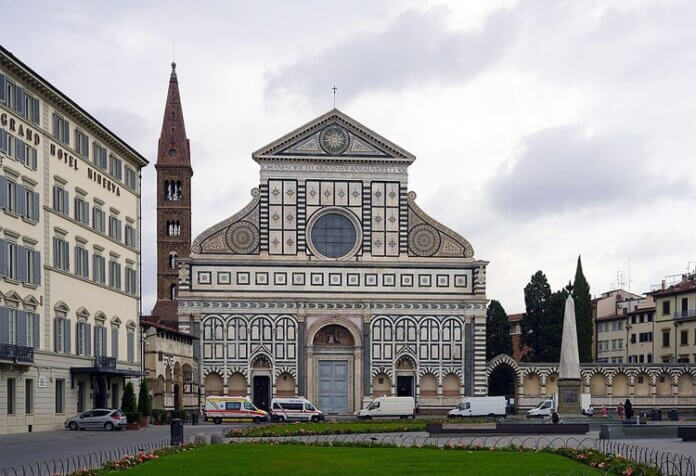Table of Contents
Introduction
In the annals of history, the Renaissance stands as a pivotal era that redefined art, culture, and intellect across Europe. Among the various aspects that epitomize the Renaissance, architecture emerges as a dominant force that not only reshaped skylines but also encapsulated the essence of cultural values and expression. This article delves into the profound impact of architecture during the Renaissance period, exploring how it became a mirror reflecting the ideals, beliefs, and societal transformations of the time.
Architectural Evolution in Renaissance Europe
The Renaissance, spanning roughly from the 14th to the 17th century, witnessed a remarkable evolution in architectural styles. Characterized by a departure from the ornate intricacies of the preceding Gothic period, Renaissance architecture embraced a revival of classical elements from ancient Greece and Rome. This rebirth of classical influences led to the emergence of architectural proportions and principles that emphasized harmony, symmetry, and proportionality.
- Revival of Classical Elements
The Renaissance architects sought inspiration from antiquity, incorporating elements like columns, pilasters, and pediments into their designs. This revival of classical features aimed to create a visual language that resonated with the ideals of balance and rationality championed by ancient civilizations.
- Human-Centric Design
Unlike the anonymous craftsmanship of previous eras, the Renaissance celebrated individual creativity and human intellect. This shift in perspective led to a focus on human proportions and ergonomics in architectural design. Buildings were conceived not merely as structures but as spaces that harmonized with human interactions, a reflection of the era’s growing appreciation for the individual.
Architectural Marvels as Cultural Statements
Architecture in Renaissance Europe transcended its utilitarian function to become a canvas for cultural statements. Monuments and edifices were no longer mere buildings; they became powerful symbols of civic pride, religious devotion, and political influence.
- Cathedrals and Religious Expression
Cathedrals such as the Florence Cathedral and St. Peter’s Basilica exemplify the religious fervor of the era. These awe-inspiring structures blended the spiritual with the aesthetic, employing innovative engineering techniques to reach new heights, both literally and metaphorically. The soaring domes and intricate facades of these cathedrals reflected the Renaissance belief in the divine and humanity’s aspiration to reach for the heavens.
- Palaces and Political Significance
Renaissance Europe witnessed the rise of powerful city-states and ruling families. Palaces like the Palazzo Vecchio in Florence and the Doge’s Palace in Venice were architectural embodiments of political authority. Lavish interiors, grand staircases, and opulent courtyards showcased the opulence and influence of the ruling elite.
The Urban Renaissance Landscape
The architectural renaissance was not confined to standalone structures but transformed entire cityscapes. Urban planning and infrastructure underwent a renaissance of their own, reflecting the desire for order and functionality.
- Piazzas as Social Hubs
The Renaissance city was characterized by central piazzas, which served as bustling centers of social and cultural activity. Piazzas like the Piazza del Campo in Siena were surrounded by architectural masterpieces and facilitated gatherings, markets, and celebrations. These communal spaces became mirrors of societal vibrancy and interaction.
- Architectural Symmetry in Urban Design
The Renaissance penchant for symmetry extended to urban planning. Streets were laid out in grid patterns, enhancing accessibility and promoting aesthetic balance. This urban symmetry, often radiating from a central point, not only facilitated navigation but also emphasized the ideals of rationality and harmony.
Legacy and Influence on Modern Architecture
The architectural legacy of the Renaissance continues to resonate in contemporary times. Its emphasis on proportion, symmetry, and the integration of art with function has left an indelible mark on architectural thought and practice.
- Neoclassical Revival
The 18th and 19th centuries witnessed a revival of Renaissance architectural principles through the neoclassical movement. Prominent architects like Andrea Palladio drew inspiration from Renaissance aesthetics, further shaping the architectural landscape of their eras.
- Timeless Inspiration
The impact of Renaissance architecture is not confined to Europe. Its principles have transcended borders and cultures, inspiring architects worldwide. The White House in Washington, D.C., for instance, draws heavily from neoclassical ideals, showcasing the enduring influence of Renaissance thought.
Artistry in Detail: Architectural Features
The Renaissance architects’ attention to detail elevated their creations to the realm of artistry. Every facet of a building was meticulously designed, reflecting their commitment to both functionality and aesthetics.
- Intricate Facades
Facades became a canvas for intricate ornamentation and decorative elements. Elaborate carvings, relief sculptures, and decorative motifs adorned the exteriors of buildings, telling stories and conveying symbolism. These facades captured the essence of the structure’s purpose and the era’s artistic ethos.
- Play of Light and Space
The Renaissance architects were masters of manipulating light and space. They incorporated innovative techniques such as the use of pilasters, columns, and arches to create interplays of light and shadow that enhanced the visual appeal of their creations. This emphasis on light not only added depth to structures but also evoked emotional responses from those who beheld them.
Architectural Visionaries of the Renaissance
The architectural renaissance owed much of its brilliance to the visionary architects who dared to push boundaries and challenge conventions.
- Filippo Brunelleschi
Brunelleschi’s genius is perhaps best exemplified by the Florence Cathedral’s iconic dome. His innovative engineering solutions allowed for the construction of a colossal dome that defied architectural limitations of the time. His architectural achievements became benchmarks for structural innovation and mathematical precision.
- Andrea Palladio
Palladio’s influence extended beyond his lifetime. His treatise, “The Four Books of Architecture,” became a seminal work, spreading Renaissance architectural principles across Europe. His villas, characterized by symmetry, proportion, and harmony, continue to inspire architects seeking timeless elegance.
Architectural Reflections of Cultural Values
Architecture during the Renaissance mirrored the cultural values and ideologies of the period.
- Humanism and Rationality
The Renaissance was marked by the resurgence of humanism, an intellectual movement that celebrated human potential and the pursuit of knowledge. Architecture became a tangible expression of these ideals, as structures were designed with human proportions in mind. The Vitruvian Man, a drawing by Leonardo da Vinci, encapsulates this humanistic spirit, emphasizing the harmony between man and architecture.
- Religious Reform and Expression
The architectural choices of the era reflected the ongoing religious transformations. The shift towards Protestantism prompted architectural reforms, as churches embraced simplicity and clarity in design to align with the reformist ideologies. This shift can be observed in the design of Protestant churches that embraced unadorned interiors and emphasized the preaching of the Word.
The Enduring Influence on Modern Urban Planning
The Renaissance not only reshaped the aesthetics of buildings but also influenced urban planning principles that continue to guide modern cities.
- Creating Livable Cities
The Renaissance emphasis on creating well-organized, aesthetically pleasing urban spaces laid the foundation for contemporary city planning. Concepts like walkability, mixed-use development, and public spaces find their roots in the Renaissance urban vision.
- The Aesthetic-Meets-Functional Approach
Modern architects continue to draw inspiration from the Renaissance’s integration of aesthetics and function. The blend of form and purpose has become a hallmark of successful urban planning, where structures enhance the environment while serving practical needs.
Architectural Education and Discourse
The Renaissance’s impact extended beyond built structures, influencing architectural education and discourse.
- Architectural Treatises
Architects of the Renaissance documented their ideas and principles in treatises that continue to inform architectural education. These writings provided a foundation for architectural theory, enabling future generations to study and build upon the wisdom of their predecessors.
- Pedagogy and Innovation
The Renaissance witnessed the establishment of architectural academies that nurtured aspiring architects. These institutions emphasized the amalgamation of theory and practice, cultivating an environment where innovation thrived.
Preserving the Renaissance Architectural Heritage
In the present day, efforts to preserve the architectural gems of the Renaissance are paramount.
- Restoration and Conservation
Renaissance buildings, often centuries old, require meticulous restoration and conservation to ensure their longevity. Techniques that respect historical authenticity while addressing structural issues are vital in maintaining these cultural treasures.
- Cultural Tourism and Appreciation
Cultural tourism plays a pivotal role in preserving Renaissance architecture. Visitors from around the world are afforded the opportunity to appreciate the intricate details and historical significance of these structures, fostering a sense of appreciation and support for their preservation.
Conclusion: An Enduring Legacy
The Renaissance era’s architectural achievements reverberate through time, bridging past and present. As we gaze upon the architectural marvels that continue to stand, we are reminded of the profound impact these structures had on shaping our world. From echoing cultural values to influencing modern architectural principles, the Renaissance architects left a legacy that transcends centuries and inspires architects, artists, and dreamers alike. As we walk through the cobblestone streets and gaze upon soaring domes, we connect with an era that celebrated human ingenuity, artistic expression, and the power of architecture to tell stories of a bygone age.




